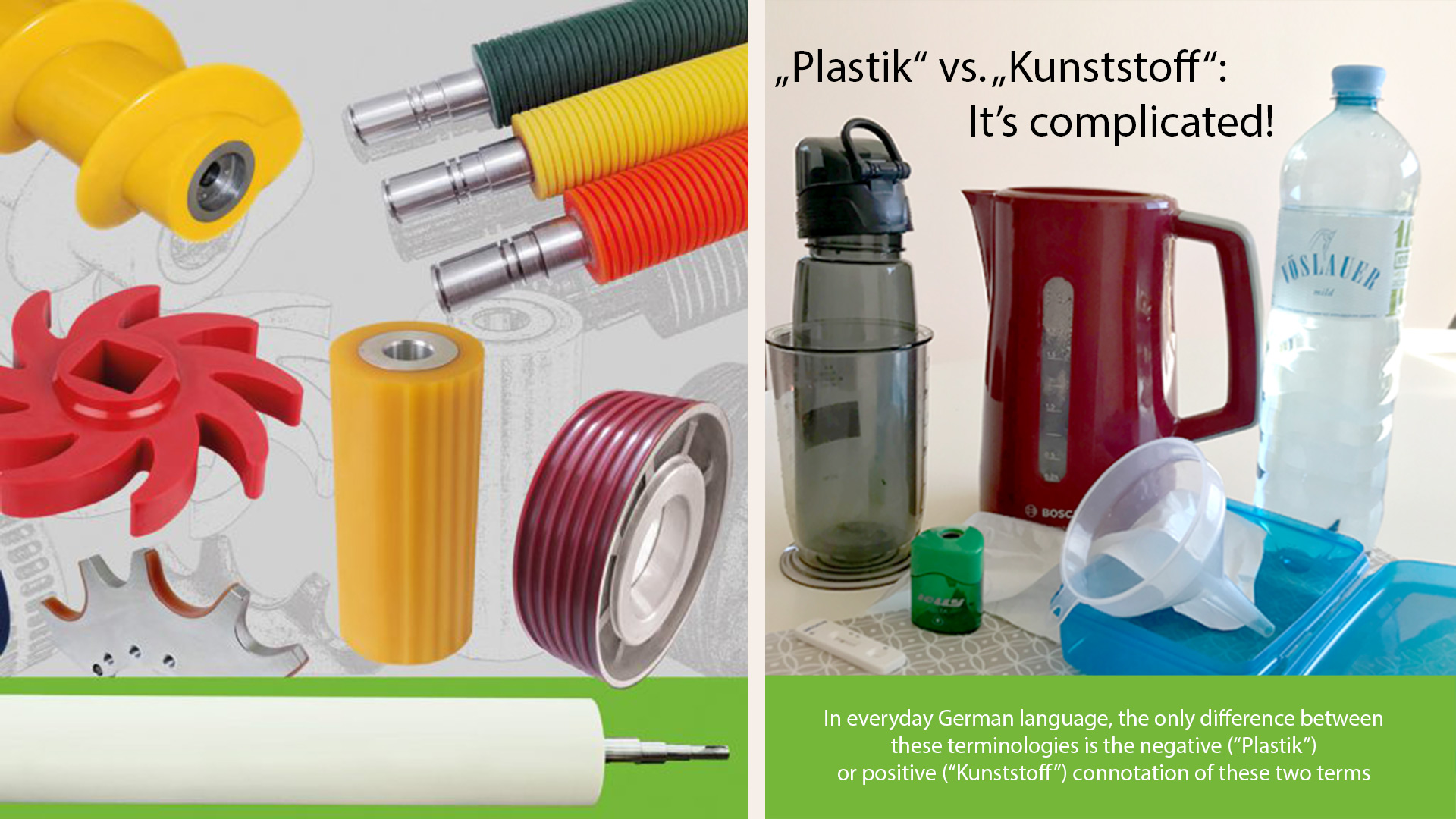What fascinating material are we talking about? It accompanies us every day, whether in the news or in the things of everyday life, such as clothes, computers, cell phones or cars. Over 400 million tons of the material are produced every year.
We are talking about plastic! However, what is exactly the difference between “Plastik” and “Kunststoff” in the German language?
In the media, the material faces a tough situation and is criticized from many sides. As a result, the term „Plastik“ often used in a derogatory way and is not infrequently associated with cheap and poor quality. “Kunststoff”, on the other hand, is seen as a material with a lot of potential due to its robustness, durability, weight reduction and versatility.
But what is the difference between “Plastik” and “Kunststoff” in German?
In everyday German language, the only difference between these terminologies is the negative (“Plastik”) or positive (“Kunststoff”) connotation of these two terms, because “Plastik” is the colloquial term for plastics (“Kunststoffe” is formal) of all kinds. Plastics (in German also called “Plaste”, “Technopolymere”, “Kunststoffe” oder “Plastik”) are organic materials made of polymers (these consist of macromolecules) whose main component is carbon. The term „Kunststoff“ is being used more in technical jargon.
The term „Plastik“ comes from the Greek word „plastiko,“ which means malleable or formable. In the English-speaking world, people also use this word origin and say „plastic“. In German-speaking countries, „Plastik“ was adopted after the Second World War from the occupation of American, English and French soldiers.
Plastics can be classified according to their mechanical-thermal behavior into thermoplastics (thermo-soft plastic), thermosets (thermosetting polymers) and elastomers.
Thermoplastics are pliable or moldable in a certain temperature range (non-crosslinked polymers). Thermosets are obtained by irreversibly curing prepolymer resins or soft solids (tightly crosslinked polymers). Elastomers are viscoelastic polymers with weak intermolecular forces, such as polyurethane (PU, PUR) or rubber.
From a technical, chemical point of view, one could say: „All types of “Plastik” are “Kunststoffe”, but not every “Kunststoff” is “Plastik”.” This is because the term „Plastik“ can also be used to derive malleable/plastic behavior. But this does not include elastomers (such as rubber or polyurethane). This means that polyurethane is a “Kunststoff”, but not a “Plastik”.
________
A Report of DI Dr.techn Patrick Steinbauer – asma development department

